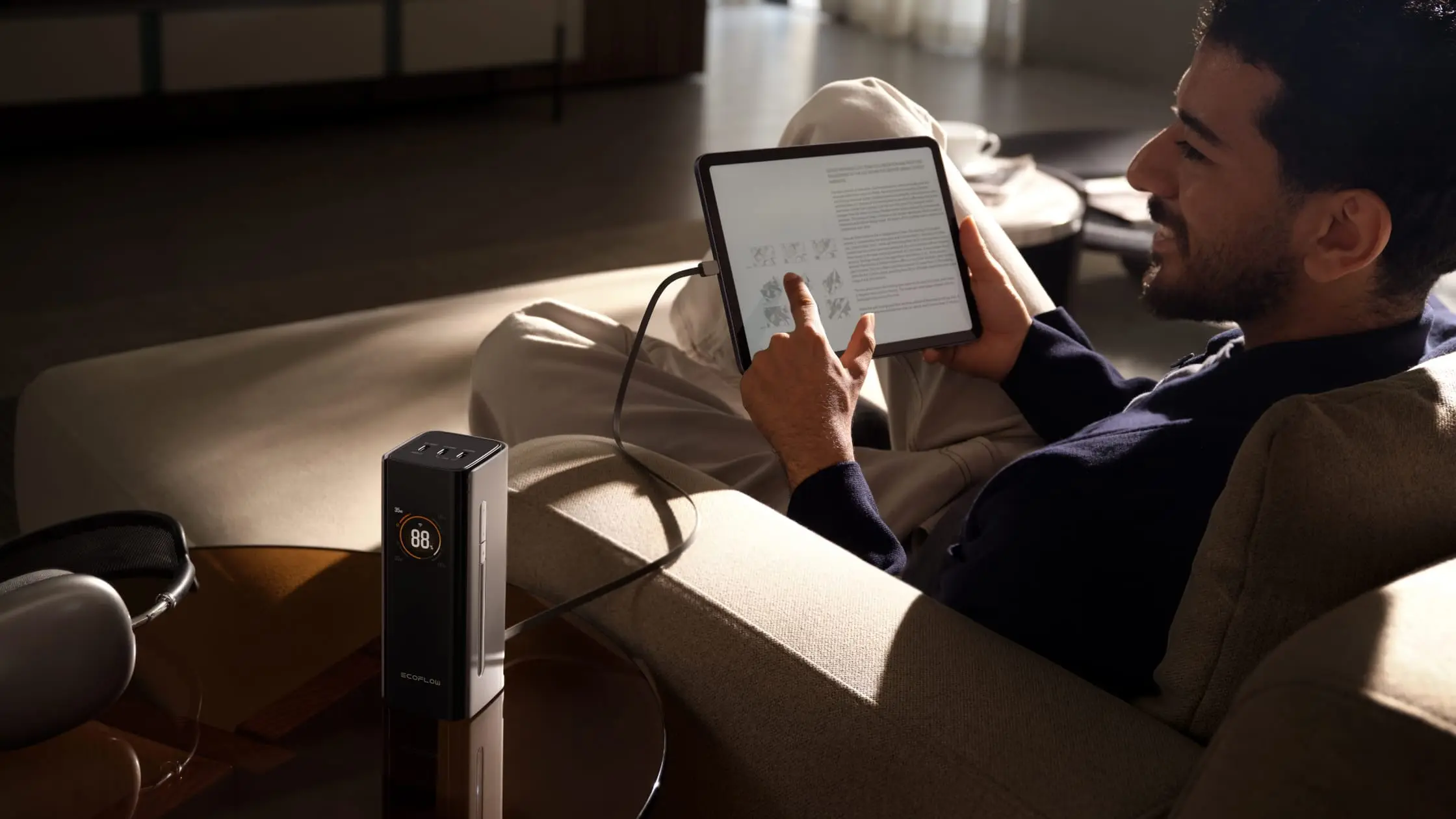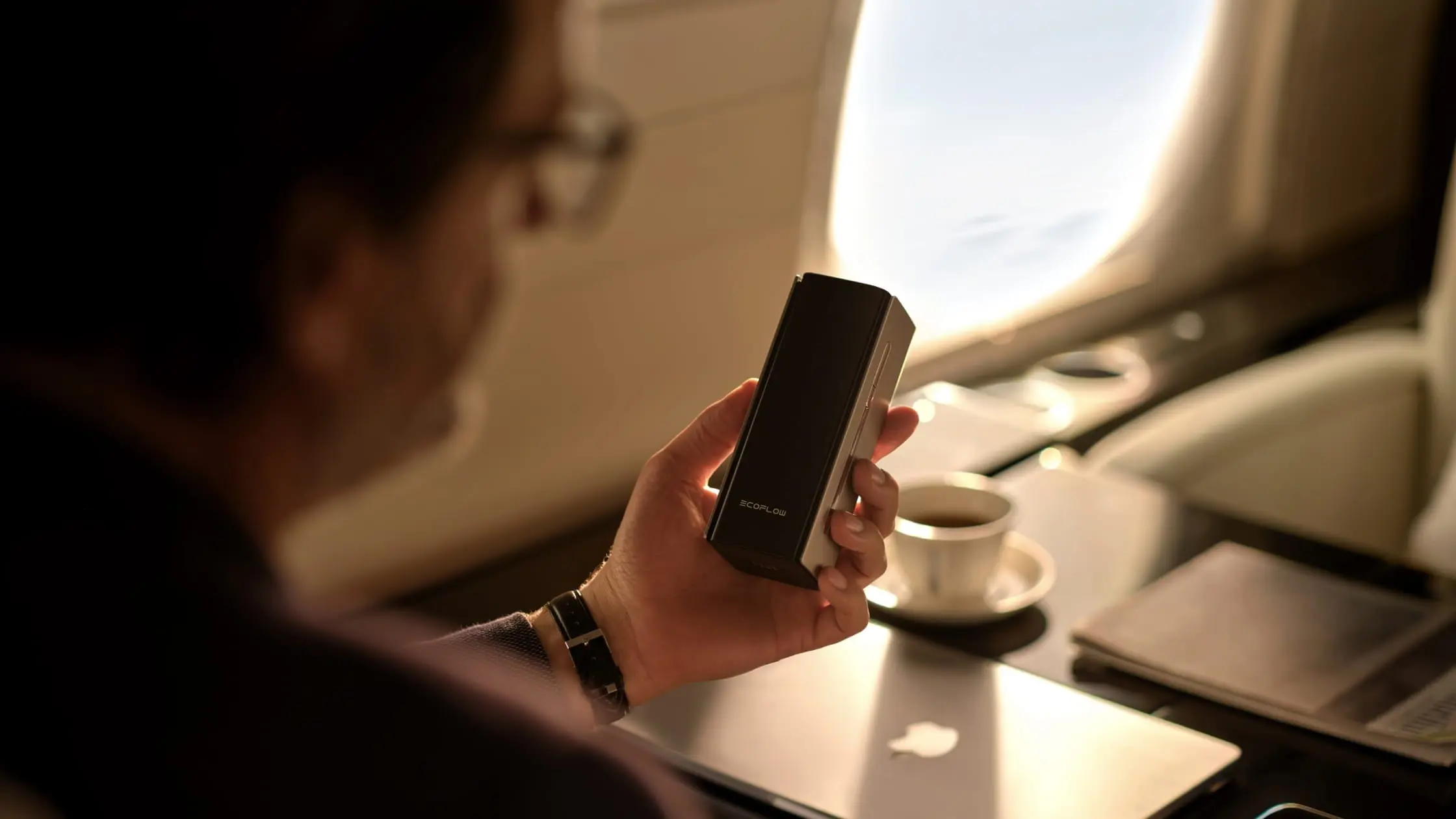How Charging with Induction Powers Modern Wireless Charging Systems
Think about the simplicity of placing your phone on a pad and watching it charge, no tangled cables, no worn-out plugs, just seamless power transfer. Wireless charging has quietly moved from novelty to everyday standard, powering everything from smartphones and earbuds to smartwatches. For Canadians who appreciate both convenience and modern design, inductive charging has become an easy way to keep devices ready without adding clutter.
At its core, this technology relies on induction, which is a process that uses an electromagnetic field to transfer energy from a charging base to a device without direct contact. The result is a clean, reliable connection that feels almost effortless in use. This article explores how inductive charging works, the science behind it, the main types of systems available, and the expanding range of applications, from bedside tables to electric vehicles, that show where wireless energy is headed.
What Are Wireless Charging Systems?
Wireless charging is any method that delivers power without the need for a physical plug or cable connection. Although several approaches exist, inductive charging has become the standard for most consumer devices, including smartphones, wearables, and wireless earbuds.
For Canadians working in flexible mobile office setups, inductive charging adds convenience and durability. It reduces wear on cables, protects device ports from constant plugging and unplugging, and keeps workstations cleaner. To fully appreciate its role today, it’s worth looking at how wireless charging developed and the main types of systems in use.
Development History of Wireless Charging
The concept of transmitting electricity without wires goes back to Nikola Tesla, who demonstrated that power could travel through electromagnetic fields. His experiments were ahead of their time and laid the scientific foundation for what we now recognize as inductive charging.
It wasn’t until the late 1990s that engineers began adapting the principle for consumer use. A major milestone came in 2008 when the Wireless Power Consortium introduced the Qi standard, which ensured compatibility across brands and devices. This breakthrough shifted wireless charging from a novelty to a mainstream feature in smartphones and portable electronics.
Since then, improvements in efficiency, alignment, and heat management have allowed the technology to expand well beyond mobile devices. Today, wireless charging is being applied in electric vehicles, medical implants, and even robotics, showing just how far Tesla’s early vision has come.


Types of Wireless Charging
Despite the significant differences between power banks and wireless chargers, wireless charging systems themselves also vary in terms of technology and methods. Wireless charging systems differ in how they transfer energy, the distance they can cover, and how efficient they are. The four main methods in use today are inductive, resonant, capacitive, and RF charging.
Inductive Charging
Inductive charging is the most common and widely used method today, relying on magnetic induction between two closely aligned coils, one in the charging pad and the other in the device. Because the coils sit so close, energy transfer is highly efficient, often reaching up to 90%. This technology powers everyday items like smartphones, smartwatches, wireless earbuds, and even electric toothbrushes, making it the foundation of most modern wireless charging systems.
Resonant Charging
Resonant charging relies on magnetic resonance coupling, giving it more flexibility in coil alignment and the ability to charge multiple devices simultaneously. It’s commonly used in applications that need a moderate range and higher power, such as electric vehicles, robotic stations, and medical implants. In everyday use, it enables some EVs to charge simply by parking over a pad without plugging in, though it’s slightly less efficient than inductive charging.
Capacitive Charging
Capacitive charging transfers power through electric fields between conductive plates rather than magnetic coils, allowing for thin, lightweight components that suit compact electronics or space-limited designs. While promising, it remains mostly experimental due to its low power capacity and safety challenges in humid or metallic environments, with applications currently limited to prototypes and some wireless kitchen appliances.
RF (Radio Frequency) Charging
RF charging transmits energy through radio waves, making true over-the-air charging possible at longer distances. While less efficient than other methods, it is ideal for low-power devices such as IoT sensors, smart home systems, and remote monitoring tools where convenience outweighs output. Examples include wireless security sensors or smart tags that remain powered continuously without manual recharging.
Comparison of Wireless Charging Types
| Charging Type | Principle | Charging Distance | Efficiency | Application Fields | Pros | Cons |
|---|---|---|---|---|---|---|
| Inductive Charging | Magnetic induction between coils | 0–10 mm | High | Smartphones, home electronics | Stable, efficient, safe | Short range, requires alignment |
| Resonant Charging | Magnetic resonance coupling | 10–500 mm | Moderate | EVs, robotics | Longer range, supports multiple devices | More heat, lower efficiency |
| Capacitive Charging | Electric field between plates | 0–50 mm | Moderate | Lightweight or experimental devices | Compact, low interference | Limited power, safety concerns |
| RF Charging | Electromagnetic wave transmission | Up to several meters | Low | IoT, sensors | Long range, flexible placement | Low output, slow charging |
Among the different wireless charging methods, inductive charging remains the leading standard thanks to its balance of efficiency, safety, and reliability. Its ability to deliver stable power with minimal energy loss has made it the backbone of modern wireless charging systems, powering everything from smartphones to smartwatches. As manufacturers continue to refine coil design and heat management, inductive charging is expected to remain the benchmark for convenient and dependable power delivery in everyday life.
Definition and Components of Inductive Charging
To understand how simple placement turns into seamless power, it helps to break down what inductive charging is and the parts that make it work.
What Is Inductive Charging?
Inductive charging is a wireless power transfer method that uses an electromagnetic field to move energy between two objects. It works when the charging device (transmitter) and the receiving device (receiver) are placed in very close proximity, often touching, so the energy can flow efficiently. This simple setup enables millions of people to wirelessly charge their phones, earbuds, or smartwatches simply by placing them on a pad—no cables, no plugs, just effortless power transfer.
Components of Inductive Charging
An inductive charging system may look simple from the outside, a phone resting on a sleek charging pad, but inside, it’s a coordinated set of parts working together to move power wirelessly.
The Transmitter (Charging Pad)
This is the power source you place your device on. Inside the charging pad, electricity from the wall outlet is converted into a magnetic field.
Power Source: Draws power from the wall and prepares it for wireless transfer.
Transmitting Coil: A copper loop that generates an oscillating magnetic field when current flows through it.
Control Circuit: Regulates power output and communicates with the device to ensure charging begins and stops safely.
The Receiver (Device Side)
This component is built into your phone, smartwatch, or earbuds case. It captures the magnetic field from the pad and turns it into usable power.
Receiving Coil: Collects the magnetic field and transfers it into the device.
Rectifier Circuit: Converts the received energy into direct current (DC) that the battery can store.
Battery Management System (BMS): Controls charging speed, prevents overheating, and avoids overcharging.
Together, these two sides form a safe and efficient loop, delivering power by induction without the need for cables or exposed metal contacts.


How Does Inductive Charging Work
Although it may sound complex, charging with induction relies on a straightforward principle: using magnetic fields to move energy through the air. When you place your phone on a wireless charging pad, three steps occur almost instantly.
Generating an Oscillating Magnetic Field
When the charging pad is plugged into a wall outlet, it takes in electricity and converts it into a high-frequency alternating current. This current flows through a copper coil inside the pad, producing a continuously shifting magnetic field. Think of it as an invisible energy bubble, ready to transfer power to any device with a matching coil placed on top.
Capturing the Field and Inducing a Current
When you place a compatible device on the charging pad, the receiving coil inside the device lines up with the coil in the pad. The magnetic field generated by the pad flows through this coil, instantly producing an electric current inside the device. No wires or plugs are needed, the energy transfer happens wirelessly, powered by the principle of electromagnetic induction. This is the core mechanism that makes charging with induction possible.
Converting the Current and Charging the Battery
Once the receiving coil generates electricity inside the device, the current is converted from alternating current (AC) into direct current (DC), which the battery can actually store. From there, the power flows steadily into the battery while built-in circuits manage the charging speed, regulate voltage, and monitor heat levels. This ensures the device charges safely, efficiently, and stops automatically once the battery is full. This process is similar to how a portable power station can efficiently charge devices without the need for traditional plugs or cables.
Advantages and Limitations of Inductive Charging
While the ease of setting a device on a pad and watching it charge is undeniable, inductive charging comes with both strengths and compromises. On the one hand, it offers everyday convenience, safer operation with no exposed connectors, and reduced wear on charging ports. On the other hand, it lags in wired charging speed, tends to cost more, and requires precise device alignment.
Primary Benefits: Enhanced Convenience and Safety
One of the main advantages of inductive charging is how effortless it makes everyday use. Instead of fiddling with cables, you simply place your phone or smartwatch on the pad, and charging begins automatically. This makes powering up devices quicker and more seamless.
It’s also gentler on your electronics. Since there’s no need for constant plugging and unplugging, your device’s charging port experiences far less strain, which helps extend its overall lifespan. This small detail can make a big difference for people who charge their devices multiple times a day, or for those who rely on the power bank for on-the-go charging.
Finally, safety is a core benefit. Modern inductive chargers often include Foreign Object Detection (FOD), which halts charging if coins, keys, or other metallic objects are present on the pad. This feature prevents overheating and ensures a safe, worry-free charging experience.


Challenges in Performance and Cost-Effectiveness
While inductive charging is convenient, it does come with performance limitations, the most noticeable being charging speed. Wireless pads generally take much longer to fully charge a device compared to wired fast chargers. For instance, a 15W inductive pad may require 2.5 to 3 hours to fill a smartphone battery, whereas a modern 120W wired charger can accomplish the same task in as little as 20 to 30 minutes. For users who need quick top-ups during a busy day, this difference can feel significant.
Another drawback is cost. Inductive chargers involve more complex components, extra coils, control circuits, and safety mechanisms, on both the pad and the device itself. This added technology typically results in higher prices compared to standard wired chargers. While many Canadians are willing to pay for convenience and innovation, it still makes wireless charging less accessible for those seeking budget-friendly options.
Usability also presents a challenge. With inductive charging, proper alignment between the device and the charging pad is essential. Even small shifts in placement can interrupt the charging process, forcing the user to reposition their device. Unlike wired charging, where the connection remains secure once plugged in, this requirement for precision can make wireless charging less flexible in everyday scenarios.
To address these gaps, hybrid solutions are emerging. For Canadians who need reliable power during work or travel, the EcoFlow RAPID Pro Power Bank(20,000mAh, 230W, 100W Built-in Cable) provides an alternative. With a built-in 60 cm cable, a 20,000 mAh capacity, and 230W output for charging up to four devices simultaneously, it combines portability with high performance. Its air-travel-friendly design makes it ideal for professionals, students, and mobile office setups, offering the speed and flexibility that inductive charging alone sometimes lacks.
Usability Constraints and Future Developments
Inductive charging is convenient but limited by slower speeds, alignment issues, and efficiency drops with multiple devices. New developments like higher-power systems, better coil designs, and Qi2 technology aim to fix these challenges, offering faster, safer, and more flexible charging. As the tech evolves, Canadians can expect wireless charging to handle more devices, including larger electronics, while delivering performance closer to wired solutions.
Conclusion
Wireless charging, built on inductive technology, has reshaped the way Canadians keep their devices powered, offering cable-free convenience at home, in cafés, and on the move. While wired chargers still lead in speed, combining both methods gives users the best mix of flexibility and performance for different scenarios. With ongoing advancements like Qi2 and higher power systems, inductive charging is set to become faster, safer, and more versatile, making it an increasingly practical part of everyday life.
FAQ
Are wireless charging systems safe?
Yes, wireless charging systems are safe. Those built to the Qi standard use low-frequency magnetic fields and include safety mechanisms like Foreign Object Detection (FOD), temperature monitoring, and automatic shutoff. These protections prevent overheating, misalignment issues, and accidental charging of metal objects, keeping both your device and the user safe.
What is the difference between inductive charging and resonant charging?
The key difference is in how energy is transferred between the coils. Inductive charging uses tight coupling, meaning the device must be placed directly on or very close to the charging pad for efficient power transfer. This is ideal for phones, earbuds, and wearables. Resonant charging relies on loose coupling, allowing more distance and flexibility in coil alignment, which makes it better suited for charging multiple devices at once or larger systems like electric vehicles.
How can I identify the best induction charger for my phone?
To choose the best induction charger for your phone, look for Qi certification to guarantee safety and full compatibility with your device. Check the wattage, 15W is ideal for most smartphones for faster charging speeds. Features like magnetic alignment or anti-slip surfaces help keep your phone in place, while extras such as temperature control and Foreign Object Detection (FOD) add an extra layer of protection and reliability.
Can all phones with induction charging capabilities be charged on any pad?
Not all phones with induction charging will work equally on every pad. Most modern devices support the Qi standard, so they’ll charge on most Qi-certified pads, but the speed and efficiency can differ based on the charger’s wattage and coil design. Newer iPhones, for example, perform best with MagSafe or Qi2-certified chargers, which ensure proper alignment and faster, more stable charging.
Does using induction chargers damage my phone's battery?
No, using induction chargers does not damage your phone’s battery. Qi-certified chargers and modern smartphones have built-in safeguards that manage heat, control charging speed, and stop charging when the battery is full. This ensures the battery stays safe, making wireless charging a reliable everyday option.